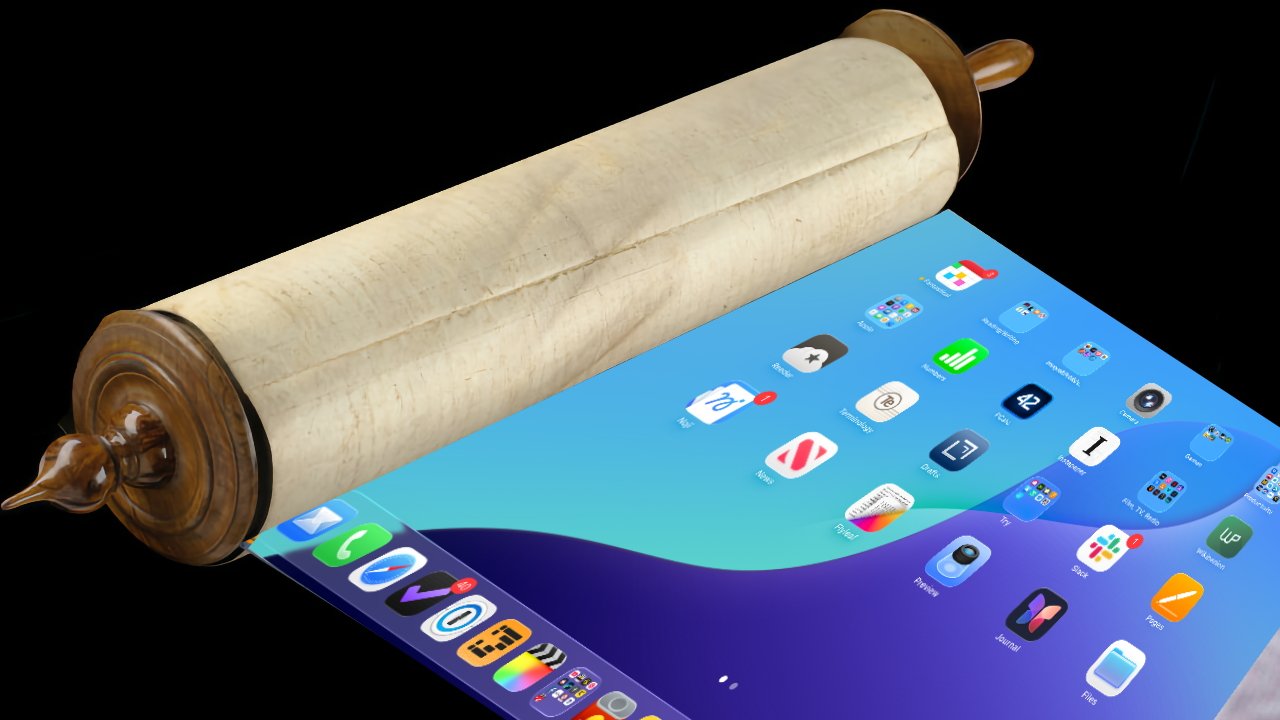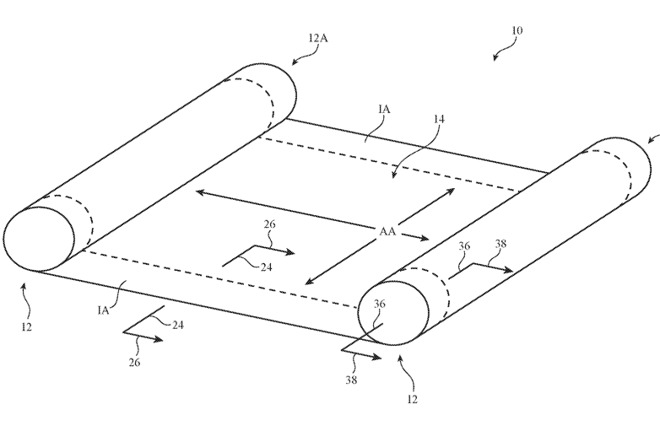A rollable iPad won't break at the hinge, and Apple keeps working on one
To combat the common failure at the hinge that existing folding smartphones commonly suffer from, Apple has spent years looking at how to make iPhone or iPad screens that can be rolled out when needed, and rolled back up when not.

It won't look like this - but it could. Apple's patent includes drawings similar to this. (Scroll source: Fae on Wiki Commons)
Following at least two earlier patents about foldable displays, and also much older ones, Apple is once more also investigating screens that can be stored rolled up.
"A flexible display may be wrapped around one or more rollers," says the newly-revealed patent application called "Electronic Device With Flexible Display Structures." It continues: "optional deployment rollers may be used to help deploy the display as [it] is pulled out of the housing."
Much as it sounds, the purpose is not necessarily to replicate old-style parchment rollers, but rather to have a device such as an iPad with a screen that can be pulled out of the chassis. The rollers need not be so visible as a scroll, but rather a small part of the mechanism which allows such a screen to be held within a device and rolled out.
Apple aims to address how "rigid structures... can make it challenging to form compact electronic devices with desired features." The patent does describe an application where there is such a rigid section for a housing printed circuit boards, electronic components, and so on, but then also a rollable display.
"In a stored position, the flexible display may be wrapped around a storage roller," explains the patent. "Optional deployment rollers may be used to help deploy the display as the display is pulled out of the housing."
Deployment rollers would keep the screen straight and steady as it's removed, rather than this truly being like an old parchment roller where the paper can become wrinkled as it's pulled out. "Elongated bistable support members may run along the edges of the display or may be overlapped by a central active area of the display to help stiffen and support the display in its extended position," continues the patent.

Detail from the patent showing one possible configuration of a rollable screen
Apple wants to make it so that the screen is useful at all times, too, so that it can display information even when rolled up. "A flexible display may be viewable through a transparent housing window before and after the flexible display is pulled out of the housing," it says.
The patent application describes rolling the display around either one or two rollers, so you can imagine a screen being pulled out to show a small display, or then wider to provide a greater working space. As ever, Apple's patent attempts to cover every conceivable use of this, so it specifies that such rollable displays could be housed in everything from a laptop to a pendant, or even eyeglasses.
"The housing may have a single body," continues the patent, "eg when [the] device is a cellular telephone, tablet computer, wristwatch device etc... Or may have multiple body portions that are coupled by one or more hinges (e.g., in a laptop computer, a bifold or trifold device, or other device with foldable portions."
Long term research
What's especially significant about this newly-revealed patent application is that it is the sixth time it's been applied for. And Apple has been awarded the patent for each of previous five times.
The original patent application was filed in 2017, and there have been subsequent re-submissions in 2020, 2021, 2023, and 2024.
Comparing the several versions of the patent, there are differences but it remains substantially the same idea. In 2020, Apple added details concerning modular display support structures and revised details about display bending, for instance.
By 2024, the developments concerned durability and specifically the use of new materials that should reduce wear. There was also a move to reducing the size of the device in order to work with thinner devices.
Those two new elements, along with proposals for an overall improvement in the roller mechanism, sound as if Apple is now refining, rather than redeveloping the idea.
This patent is credited to inventor Scott A. Myers. Among his more than 150 prior patents, there are many related ones such as "Electronic devices with sidewall displays."
Read on AppleInsider

Comments
Ah! Just read US Patent No 10,602,623, interesting.
What exactly are Apple patenting here? It seems - a display that can fit in a hinge, how it would bend, and how the layers of the display would be kept in place and not buckle.
Essentially they are using a flexible display semi laminated to the inner surface of a transparent material, the gap filled with material (maybe even a gel) with the correct refractive index that it would make the display look closer to the surface.
Imagine a book - this would be used on the spine. With two standard display panels on the front and back cover.
The spine display integrates with the front and back covers such that you can's see the join between the displays.
Now, if you have a phone like this, and were to open the phone like a book (only you look at the cover of the book instead of inside the book) you would now have a tablet.
The grooves cut into the material are so that it can bend. That's standard, nothing new.
I didn't see the rollable screens from Red Planet in this patent though.
I still think it won’t happen, though. Impractical. Deformation causes material stress. Repeat deformation stress causes breakage.
You mean the parts you use to HOLD the device?